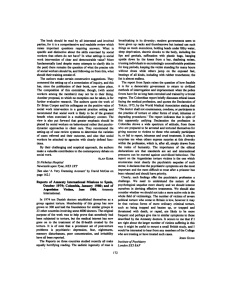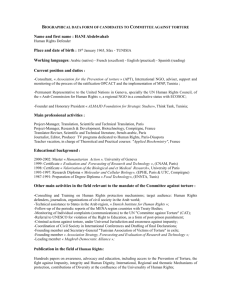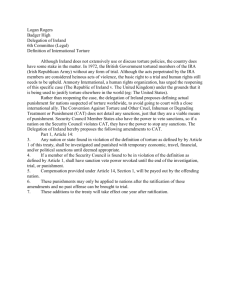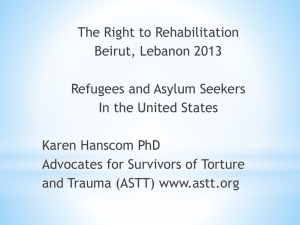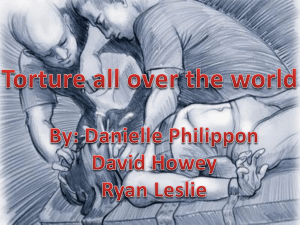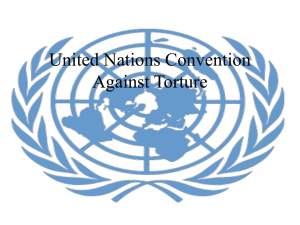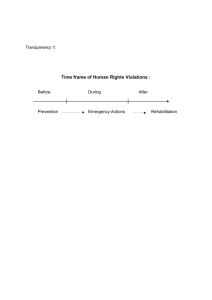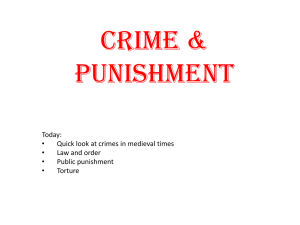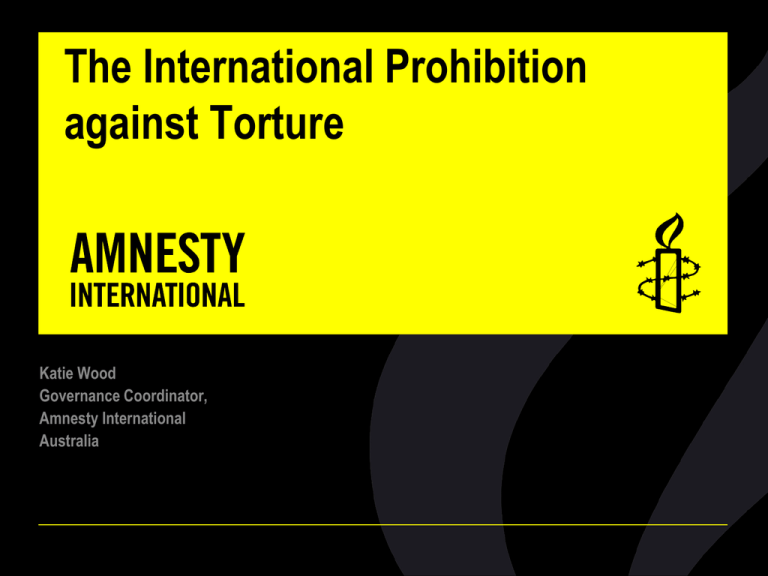
The International Prohibition
against Torture
Katie Wood
Governance Coordinator,
Amnesty International
Australia
About Amnesty International
Global movement with 2.8 million supporters in more
than 150 countries
We campaign to end grave abuses of human rights
wherever they occur
Our vision – for everyone to enjoy all those rights in the
Universal Declaration of Human Rights and other
international human rights instruments
Our campaigning work is based on our research work
undertaken in countries around the world
Independent of all governments, religious institutions,
corporate entities and political parties
Why was torture prohibited?
Current understanding post atrocities of WW2
Torture and other cruel, inhuman and degrading
practices are a denial of the victim’s inherent
humanity
It is facilitated by detention that is in secret or
isolated from contact with the outside world
Used by the State and its agents not only to
intimidate, but also to discriminate
The international prohibition definition
Torture is:
The intentional infliction of severe
physical or mental pain or suffering
for purposes such as obtaining
information or a confession, or
punishing, intimidating or coercing
someone.
Key International treaties prohibiting torture
Universal Declaration of Human Rights
(UDHR)
Convention against Torture (CAT)
International Covenant on Civil and
Political Rights (ICCPR)
Geneva Conventions and their
Additional Protocols (part of the laws of
war)
Rome Statute (International Criminal
Court)
Obligations on countries to uphold the
prohibition against torture
Condemn all forms of torture and other ill treatment and
speak out against governments that perpetrate, are
complicit in or fail to act against such abuse
Bring to justice those responsible for authorising and
inflicting torture and other ill treatment, as well as provide
redress and reparations
Ensure that information obtained by torture cannot be
invoked as evidence in any proceedings, except against a
person accused of abuse as evidence of that abuse.
Conflict in Syria – reports of torture
Since March 2011 Amnesty International has
documented:
The deaths of over 10,000 people
The deaths in custody of more than 276
people (as at March 2012)
31 forms of torture being practised in an
organised and systematic way
Some torture techniques employed in Syria
Beatings
Cigarette burns
Flesh gouged by pincers
Falaqa (beatings on the soles of
the feet)
Stress positions
Exposure to extreme temps
Being subjected to sexual
violence
Being subjected to sounds of
torture being inflicted on others
Testimony from Syria
I had long hair and a beard.
They grabbed me by both while
beating me hard with their fists,
rifle butts and kicking me. One
of them grabbed me by my
beard and then hit me hard on
my throat so I could not breathe.
Another guy hit me on the
temple with the bottom of his
gun.
“Mohammed”, 23 year old
student from Damascus
Testimony from Syria
I also suffered bisat al-rih [flying carpet]. I was on a
wooden board like a table, face up, in underpants and
blindfolded. I don’t know how the ends are raised but some
mechanism makes it go up. I suffered terrible pain on my
lower back as the body is forced into a V-shape. And I was
beaten at the same time. Three men took it in turns with the
kurbaj (whip). When they rested they drink tea, smoke a
cigarett until it’s their turn again. It lasts about one hour.
“Ghazi”, 22 year old decorator
Thank you
www.amnesty.org.au



